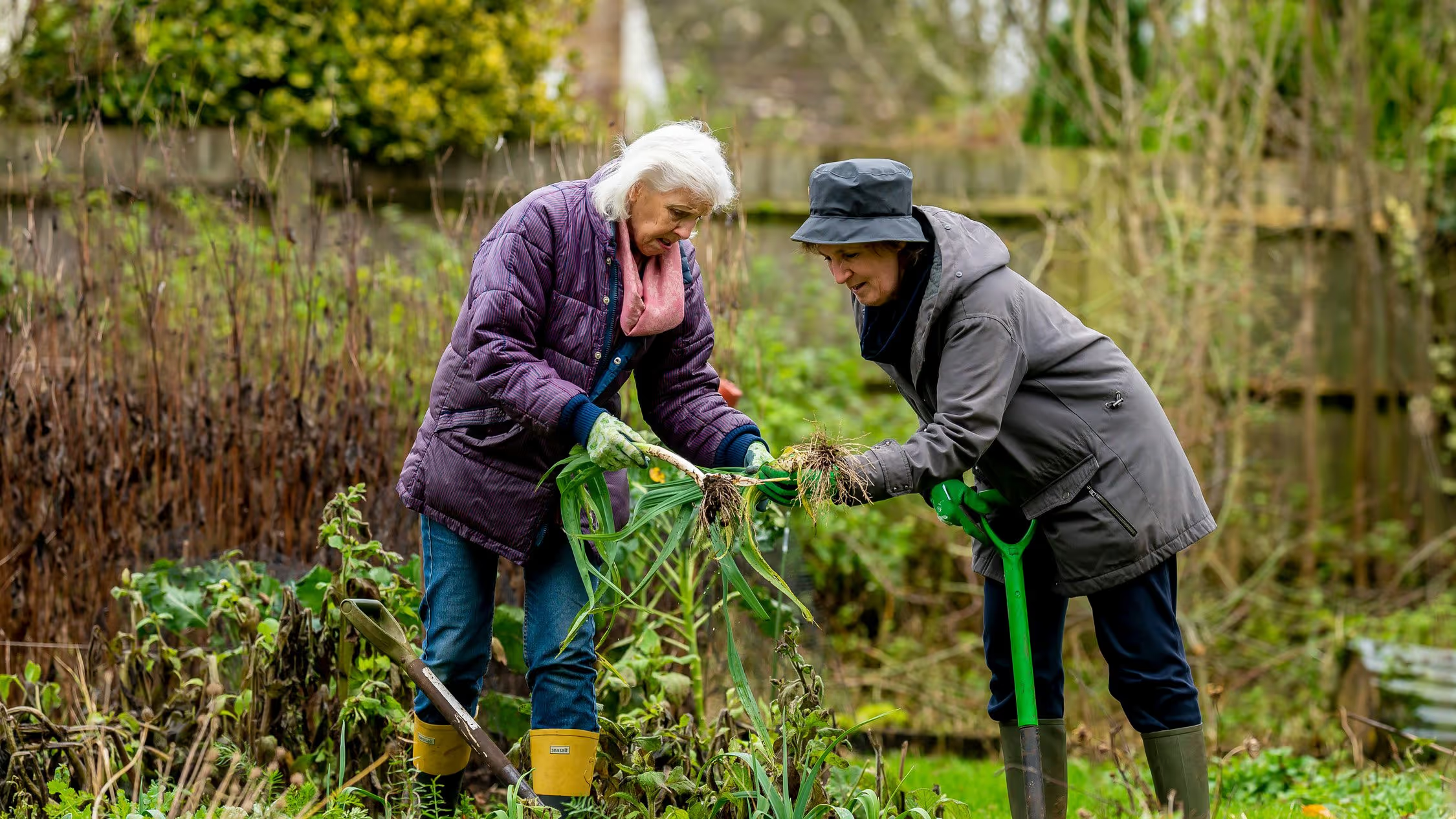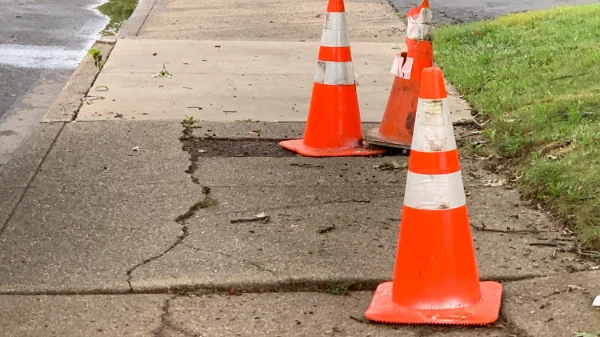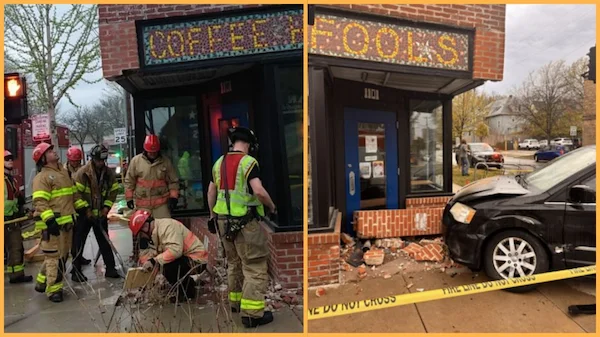Editor's Note: The challenges our cities face are growing, but so is the strength of this movement. Every story we share, every idea we spread, and every tool we build exists because people like you are committed to showing up. Your membership isn’t passive—it’s the momentum that makes change possible.
I’m not sure what I was expecting when I hit “play” on the Netflix series Live to 100: Secrets of the Blue Zones, which came out last summer. I’m not particularly interested in the topic of longevity, and don’t tend to gravitate toward travel shows. But the term “Blue Zone” caught my attention, as it had cropped up in some walkability research I’d been working on a while back. My curiosity paid off: it was a fantastic series, and soon I was recommending it to others, and thinking about what we could learn about building healthier, more resilient places.
Here’s the main idea of the Blue Zones: they’re a handful of regions from various parts of the world where people have significantly higher-than-average life expectancies. Building on gerontology studies, National Geographic Fellow and journalist Dan Buettner and a team of researchers pinpointed these longevity hotspots. After spending time and learning from elders in the Blue Zones, Buettner and his team identified nine common denominators that contribute to longer and happier lives, which fall into four key themes: related to natural movement, wise eating, connection, and outlook.
In the Netflix series, Buettner’s visits to Okinawa, Japan; Nicoya, Costa Rica; Ikaria, Greece; Sardinia, Italy; and Loma Linda, California, are a delight to watch. The surprisingly gregarious centenarians live these beautifully simple lives, surrounded by nature, healthy food, and lots of friends, family, and laughter (and wine!).

For the most part, people in the Blue Zones all live in traditional settings that feel very far removed from the typical North American existence. It would be easy to dismiss the secrets of their longevity as impossible or impractical to learn from or replicate. But Buettner’s goal isn’t just to showcase these marvels; it’s to identify the secret ingredients and share “the blueprint to reproduce longevity in our lives.”
In the final episode, we see Buettner set out to prove his theory of longevity by attempting to create a brand new Blue Zone, by bringing the principles to his home state of Minnesota. There, the town of Albert Lea (population 18,000) embarked on an ambitious “healthy city makeover” with a goal of giving the townspeople an extra two years of life expectancy.
Hundreds of interventions—some small, some large—aimed to change the behaviors of residents by providing more opportunities to eat better, move more, connect deeply, and find purpose through volunteerism. My favorite of the interventions was the installation of a new network of sidewalks and paths that gave people in nearly every neighborhood a walking route to get downtown. The Albert Lea “get healthy” experiment was a huge success, surpassing its goal of adding two years of life expectancy by more than 50%. Buettner then brings the Blue Zones program to dozens more American towns and cities, and travels to Singapore (dubbed a “Blue Zone 2.0”) to learn how a country can become healthier as a whole.
Ultimately, he concludes that:
Cities have amazing power. If you have clear objectives, in just a handful of years, they can make complete transformations. America, within the next 10 years, could be a Blue Zone. All we have to do is shift the focus from thinking that we’re going to change 330 million people’s minds, to changing their environment.
As a city enthusiast, that final conclusion resonated with me much more deeply than which specific foods to eat or which attitudes to foster. The powerful lesson here is that this idea—to change the behavior, you change the environment—is such a key insight for anyone who wants to see North American cities become thriving, healthy places for people.
We Need To Design for the Outcomes We Want
One of Strong Towns’ key goals is to help people understand that the key to slowing traffic is street design, not speed limits. The design of a street or road has a far greater effect on vehicle speeds and driving behavior than speed limits, signage, education campaigns, and enforcement!
Do we want people to drive slower and more carefully? Then we need to make physical changes to the driving environment such that driving fast feels uncomfortable and unsafe. Narrow (or remove) lanes, add street trees, get rid of slip lanes, and create continuous sidewalks and curb extensions.
If We Build It, They Will Come
The uptake in biking in Paris over the past five years is nothing short of remarkable: since 2018, annual cycling traffic in that city has increased 166%. But they didn’t get there by nagging people to get on a bike. They built out more than a thousand kilometers of bike paths and provided bike parking to go with it, and also invested in support for “soft aspects” of cycling policy, like cycling education, bike repair skills, financial assistance to purchase bikes, etc.
People will use what we build; this applies to car trips, too! What happens when we widen roads and add more lanes? Rather than traffic flow and congestion improving as hoped, just the opposite occurs. More people drive, because the conditions and the environment have changed. Not Just Bikes has a fantastic video explainer of this phenomenon.
Humans Want To Live Locally—We Should Let Them
Despite the massive shift in how we build and move within cities over the past century, people are still people, who generally make rational choices and favor efficiency.
MIT researchers Carlo Ratti and Arianna Salazar-Miranda, et al., were encouraged by what they found when they measured how often a neighborhood’s residents carry out essential trips within a quarter-hour radius (by analyzing mobile phone location data for 40 million Americans):
[D]espite the challenges intrinsic to American planning, American people aren’t naturally allergic to the 15-minute city as a concept; on the contrary, they gravitate to it. When parks and grocery stores were available nearby, average travel distances fell as people took advantage of them. That may seem like an intuitive, obvious finding — of course people like convenience — but it’s an important one. Even after a century of homogenous zoning and automobiles, Americans automatically use a 15-minute city if they can.
In the same way that the Paris bike boom proved there was ample appetite for biking once safe and pleasant infrastructure was provided, this research helps us understand that people in all types of neighborhoods desire the ability to shop, work, and enjoy recreation close to home. And if we simply stay out of the way, this type of development tends to happen naturally. Ratti and Salazar-Miranda note:
Part of our study focused specifically on New York, where a 1961 zoning code was looser in some neighborhoods than others. When the city permitted more commercial development, a mix of 15-minute amenities naturally emerged by themselves.
Blue Zones and Strong Towns
To bring this back to the Blue Zones: maybe Dan Buettner’s proclamation that in 10 years, all of America could be a Blue Zone is a little ambitious. But he’s certainly proven that small environmental changes can add up to have a big human impact. I found this series inspiring and hopeful, and if you’re interested in how the built environment can help or hinder, I suspect you will, too!
And be sure to follow up with Rachel Quednau’s reflections on Blue Zones and Chuck Marohn’s interview with Dan Burden, who appears in the Netflix series and serves as the Blue Zones Director of Inspiration & Innovation and National Walkability and Bike-ability Expert.





